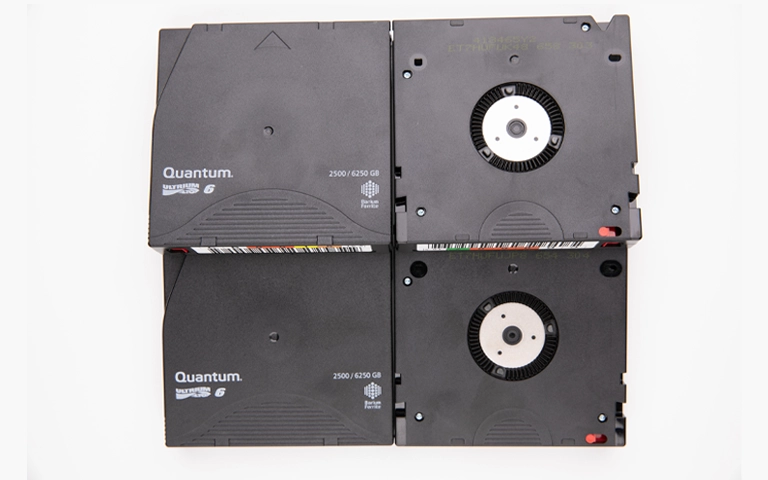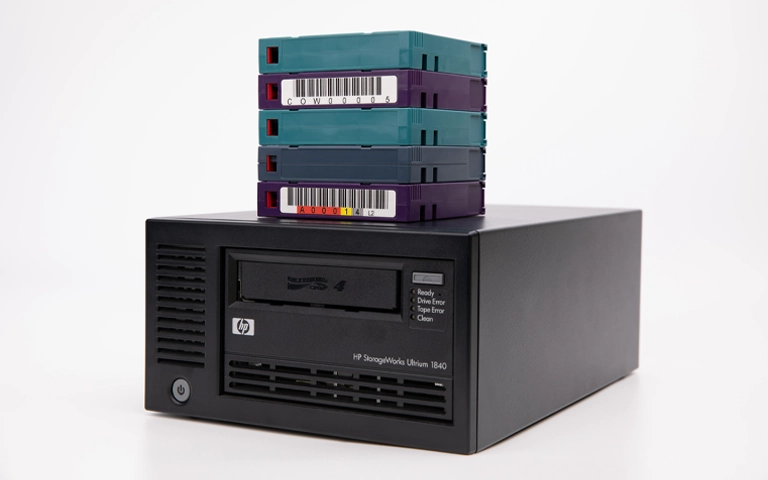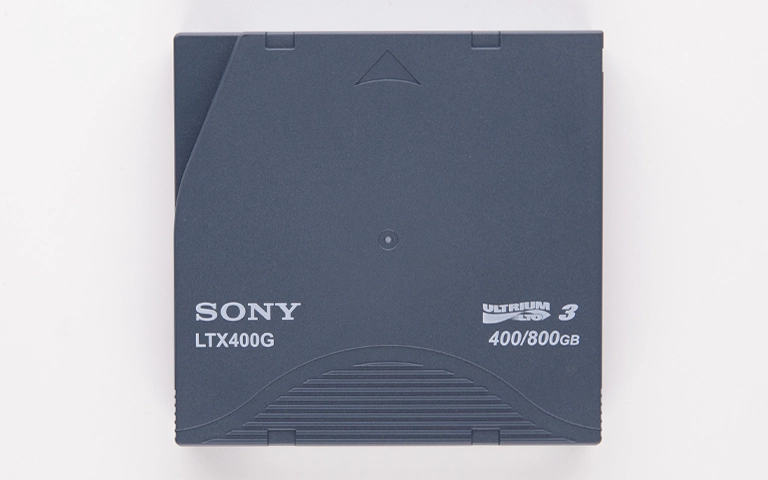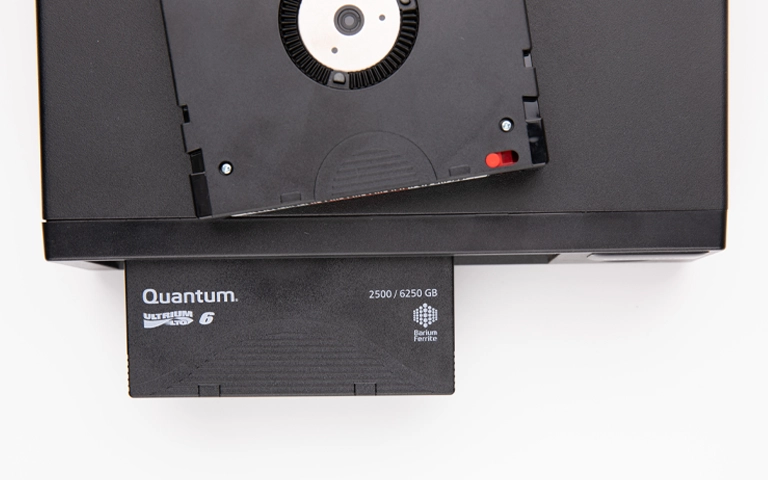Every business needs a dependable way to protect its data from unexpected loss, corruption, or cyber threats. While many companies have adopted cloud and disk-based storage, tape backup continues to hold a strong position as one of the most reliable and cost-effective methods for long-term data protection.
Tape storage offers businesses a secure, offline solution that safeguards critical information from ransomware and accidental deletions. Its durability, scalability, and affordability make it a preferred choice for organizations managing large data volumes or complying with strict data retention policies.
In this article, we will explore how tape backup works, its main advantages, and why it remains a trusted option for businesses that value reliability and security.

What Is Tape Backup?
Tape backup is a method of storing data on magnetic tapes, which are designed to hold large amounts of information securely for long periods. This traditional yet effective approach has been widely used in corporate IT environments for decades due to its reliability and cost efficiency.
A tape backup system typically includes three main components: tape cartridges, tape drives, and tape libraries.
The cartridges serve as the physical storage medium, the drives handle data writing and reading, and libraries manage multiple tapes automatically for large-scale operations.
Unlike online storage solutions, tape systems provide offline protection, which makes them highly resistant to cyberattacks such as ransomware. Because the data is not constantly connected to a network, it cannot be easily accessed or encrypted by malicious software.
Tape backup is especially useful for businesses that need to retain records for compliance purposes or archive massive datasets. It ensures data can be restored even years later, maintaining integrity and accessibility when other storage media may fail.
To learn more about how these systems function, explore our detailed guide on how tape drives work.
Key Benefits of Tape Backup for Businesses
Tape backup remains a practical and dependable choice for companies that value long-term data protection and cost efficiency. Below are the main benefits it provides:
Cost Efficiency: Tape offers a lower cost per terabyte than most disk or cloud storage options, making it ideal for archiving large datasets.
High Capacity: Modern tape technologies like LTO can store multiple terabytes per cartridge, supporting enterprise-scale backups.
Long-Term Durability: Properly stored tapes can last for decades, ensuring data availability even after years of inactivity.
Offline Security: Because tapes are stored offline, they are immune to ransomware attacks and unauthorized access attempts.
Scalability: Businesses can easily expand capacity by adding more tapes without replacing existing systems.
Energy Efficiency: Tape systems consume minimal power when not in use, reducing operational costs and environmental impact.
Compare tape backup and cloud storage for business continuity to determine the best fit for your organization.

Tape Backup vs. Other Storage Methods
Each backup method has its own strengths. Tape backup stands out for its reliability and longevity, while disk and cloud storage offer faster access and flexibility. The table below highlights how they compare across key factors:
By comparing these methods, businesses can see how tape storage offers long-term security and low operating costs, especially for archiving and offline protection.
Consider integrating tape storage into your data loss prevention plan to strengthen your backup strategy.
Common Business Uses for Tape Backup
Tape backup plays an essential role in many business continuity and compliance strategies. Its ability to store large amounts of data securely for long periods makes it ideal for several professional applications.
One of the most common uses is long-term data archiving. Many organizations are required by law or internal policy to retain information for several years. Tape systems provide a reliable and affordable way to preserve this data while maintaining accessibility for audits or investigations.
Tape backup is also widely used for disaster recovery. In the event of system failure, data corruption, or a ransomware attack, businesses can restore their operations from secure offline copies. This capability ensures continuity even when online backups are compromised.
In addition, tape storage is favored by enterprises and government institutions that manage massive data volumes, such as financial records, research archives, or video surveillance footage.
The combination of capacity, longevity, and low maintenance cost makes tape a dependable choice for critical environments.

Fast turnaround times for business-critical data
How RAID Recovery Services Supports Tape Data Recovery
At RAID Recovery Services, we specialize in restoring data from damaged or unreadable tape media, including LTO, DAT, DLT, and other magnetic formats.
Our engineers can recover data from tapes affected by wear, environmental damage, or logical corruption. Using advanced reading equipment and specialized imaging tools, we safely extract and reconstruct data without compromising its integrity.
All recovery work is performed in secure environments, ensuring complete confidentiality and chain-of-custody protection for business clients.
Whether you need to restore archived records, recover backup files, or access legacy data from aging tape systems, our experts provide reliable and efficient recovery solutions tailored to your needs.
Learn more about recovering data from LTO tape drives and how our specialists restore inaccessible tape archives.

Best Practices for Maintaining Tape Backups
Proper tape management ensures your backups remain reliable and accessible when you need them most. Follow these best practices to extend the life of your tapes and maintain data integrity:
Store tapes in a controlled environment with stable temperature and humidity levels to prevent degradation.
Label and catalog each tape clearly to simplify tracking and retrieval during recovery.
Rotate backup sets regularly using standard methods such as the Grandfather-Father-Son (GFS) scheme.
Inspect and clean tape drives to avoid read or write errors during backup operations.
Test restore procedures periodically to confirm that archived data is still accessible.
Replace aging or damaged tapes before they reach the end of their expected lifespan.
Consistent maintenance helps ensure your tape backup system remains dependable for years of secure business data protection.

Conclusion and Call to Action
Tape backup continues to be one of the most secure and cost-effective solutions for long-term business data protection. Its durability, offline nature, and scalability make it an essential part of a comprehensive backup strategy, especially for organizations managing large or sensitive datasets.
When tape media becomes damaged, unreadable, or corrupted, professional recovery is often the safest way to restore critical information.
RAID Recovery Services provides specialized tape data recovery for businesses that rely on LTO, DAT, or other formats. Our experts can help you recover archived files, restore operations, and maintain compliance with data retention requirements.
Contact RAID Recovery Services today to learn how our team can help you restore and preserve your business data safely and efficiently.
Trust the experts with proven results
Frequently Asked Questions
Why should my business use tape backup instead of cloud storage?
Tape backup offers offline protection, making it immune to cyberattacks such as ransomware. It is also more cost-effective for long-term data retention and provides higher durability compared to online-only storage options.
How long can tape backups last?
When stored under proper environmental conditions, magnetic tapes can retain data for more than 20 years. This longevity makes them ideal for archiving and compliance purposes where records must be kept for extended periods.
Can I recover data from an old or damaged tape?
Yes. Professional recovery specialists can extract and restore information from old, corrupted, or physically damaged tapes using specialized equipment and secure cleanroom environments.
How often should businesses update or replace tape backups?
It is recommended to rotate and refresh tape backups regularly. Tapes used for daily or weekly backups should be replaced every few years to ensure consistent performance and avoid data degradation.
Are tape backups still relevant for modern businesses?
Absolutely. Despite the growth of cloud and disk-based storage, tape backup remains a reliable and cost-efficient option for long-term archiving, disaster recovery, and compliance storage needs.